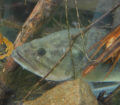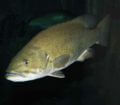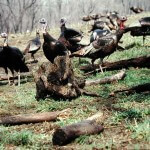Editor’s Note: When anglers find good baits that perform well, catch fish and are readily available, they’ll love that bait. But then a new bait comes on the market that has more flash, a shorter skirt or better cosmetics. The fisherman looks at his old bait. Even though it’s done the job and given him many satisfying hours of fishing, he’s convinced he has to give the new bait on the block a try. When the new bait catches a fish, the old bait is forgotten. This romance lasts for a short period, and then another new bait comes along. The same scene takes place as before. Then years later the angler sees his first, true love on another fisherman’s line. The other outdoorsman is capturing fish, and the first angler begins kicking himself for ever leaving the best bait he ever has known.
Fishermen can utilize funnel-type traps to capture crawdads. But building and using your own crayfish traps in shallow water close to cattails, weedy banks or logs makes fishing with crayfish even more fun. To build your own crayfish getters, purchase the following items for each trap you plan to make: one 18-inch square of 1/2-inch mesh cotton or nylon netting; two, 4-foot lengths of stiff clothesline wire; a large safety pin; and a bait such as a chicken neck, bacon or a fish head.
Hold the mesh cotton, and attach the end of the clothesline wire to opposite corners of the square. Then bend the wire to form an inverted V over the trap. Repeat this procedure at the other two corners. Fasten the two pieces of wire together at the top, so that the trap has a pyramid shape. Fasten the bait in the center of the net, and then set the traps out about 20-feet apart. Check the traps every 30 minutes or so, and move them as your catch drops off.
Once you capture crawfish, if the weather is very hot, you must give some thought to keeping them from getting soft. Cover your bait can with some weeds, moss or a burlap bag. Be sure to keep the covering wet, so that the evaporating water will keep the crayfish cool.
Where to Fish Crawdads:
When you’re ready to fish, you must decide where the most-likely place is to put the mudbug so a big bass will find him. My favorite crayfishing place is just off the current of a tailrace below a dam. The crawdad is in its element staying among the rocks and pebbles below a dam. Crawdads don’t like swift water, but will hold just at the edge of a current. Now old Mr. Bigmouth and smallmouth know that not only crawfish but many other bait fish hold just on the current. So, the bass will be there. When you drop a live crayfish in this type of water, hold on because you may get your arm broken.
Another variation of the same theme is to find eddy holes along creeks and streams where a boulder breaks the force of the water and leaves a pool behind. Fish and crawfish will stay in these areas, and so live, natural bait will produce fish. Rocks, mud or clay are the natural homes of the crayfish. Any spot where you find a clay bank or bottom or a rocky region, you are bound to find crayfish and bass feeding. For years outdoorsmen have fished crankbaits and worms along rip-rap and taken bass. The fish occupy this type of structure because it provides a home for their food sources, including crayfish. Therefore rip-rap is a productive place to angle the live mudbug.
The current world’s record smallmouth bass weighing 11 pounds, 15 ounces, caught by David L. Hayes of Leitchfield, Kentucky, came from Dale Hollow Lake, a reservoir known for its trophy bronzebacks. What is not so well-known is that the lake also sports some of the last remaining true crawdad fishermen. Anchored out on clay points or fishing the same points from the bank, these anglers consistently have taken good catches of largemouth and smallmouths throughout the years. These men don’t have flashy boats or tackle boxes bulging with baits. A johnboat, a lawn chair, a few old rods and a bucket full of creek-fresh crayfish are the sum of their equipment. But they catch bronzebacks and plenty of them.
 As good as crayfish are for bass, they are equally sought after by catfish as a food source. Since the cat is a bottom feeder, it naturally comes into close contact with Mr. Pincers regularly. Also crayfish are hard to beat as a trotline or rod and reel bait for catfish. Not only is the crawdad the choice food of these fish, it stays on the hook well and is inexpensive to acquire. The crayfish is still king of the live-bait-fishing world – only the fishermen have changed. The crayfish is like an old sweetheart that has been jilted. He’s the best bait in town, although our attention has been captured by other baits in prettier packages.
As good as crayfish are for bass, they are equally sought after by catfish as a food source. Since the cat is a bottom feeder, it naturally comes into close contact with Mr. Pincers regularly. Also crayfish are hard to beat as a trotline or rod and reel bait for catfish. Not only is the crawdad the choice food of these fish, it stays on the hook well and is inexpensive to acquire. The crayfish is still king of the live-bait-fishing world – only the fishermen have changed. The crayfish is like an old sweetheart that has been jilted. He’s the best bait in town, although our attention has been captured by other baits in prettier packages.
To learn more about bass fishing, check out John E. Phillips’ eBooks, print books and Audible books at https://johninthewild.com/books#bass. To learn more about fishing for catfish, go to http://amzn.to/W900eu.


















